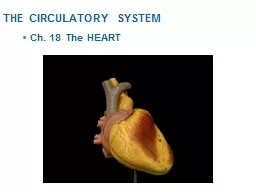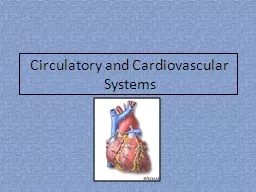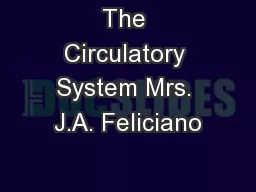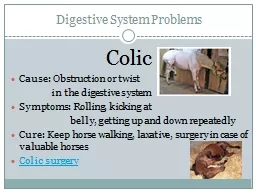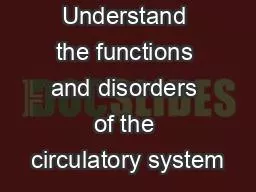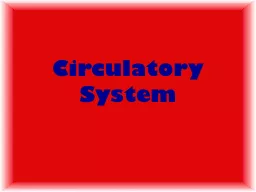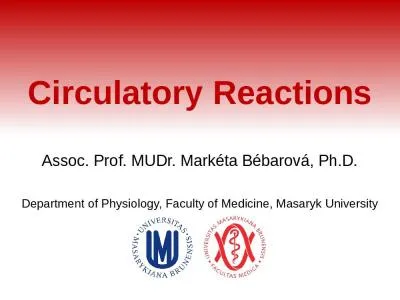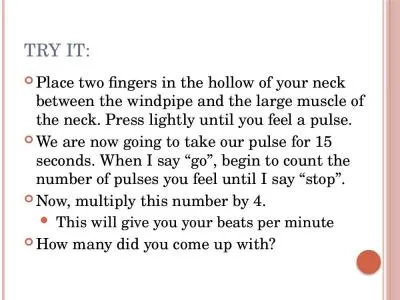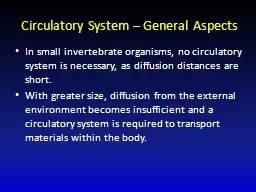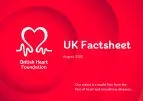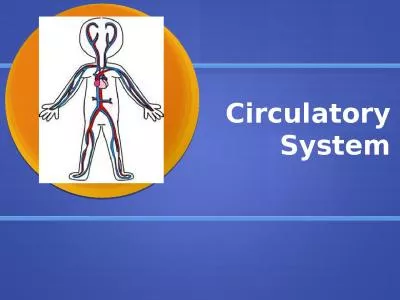PPT-THE CIRCULATORY SYSTEM Ch. 18 The HEART
Author : tatyana-admore | Published Date : 2020-04-03
ASSIGNMENT Most Of The Anatomy We Have Already Done In The Lab So Make Sure To Do The of slide 1 through 29 As I Will Likely Not Take The Time To Review This
Presentation Embed Code
Download Presentation
Download Presentation The PPT/PDF document " THE CIRCULATORY SYSTEM Ch. 18 The HEAR..." is the property of its rightful owner. Permission is granted to download and print the materials on this website for personal, non-commercial use only, and to display it on your personal computer provided you do not modify the materials and that you retain all copyright notices contained in the materials. By downloading content from our website, you accept the terms of this agreement.
THE CIRCULATORY SYSTEM Ch. 18 The HEART: Transcript
ASSIGNMENT Most Of The Anatomy We Have Already Done In The Lab So Make Sure To Do The of slide 1 through 29 As I Will Likely Not Take The Time To Review This Material PARTS OF THE CARDIOVASCULAR SYSTEM. It also returns oxygen poor blood to the lungs The circulatory system consists of The heart w hich pumps blood into the vessels Blood vessels tubes that carry blood to your en tire body and back to the heart The lungs which supply oxygen to the bloo Circulatory and Cardiovascular Systems. Aerobic Exercise . exercise that increases the need for oxygen. Anaerobic Exercise. . exercise that builds muscles through tension. Circulatory and Cardiovascular Systems. Parkway Middle School. © copyright 2014- all rights reserved www.cpalms.org. Quick LAB: Are you pulsating?. What is the pulse. ? . Find your pulse by using your index and middle fingers of your right hand and place them on your wrist at the base of your thumb in your left hand. You should feel your pulse.. Colic. Cause: Obstruction or twist . . in the digestive system. Symptoms: Rolling, kicking at . . belly, getting up and down repeatedly. Cure: Keep horse walking, laxative, surgery in case of valuable horses. ‹#›. Circulatory . D. isorders. A ballooning and weakening in the artery wall that is subject to burst at any given time due to the pressure on the artery.. . If aneurysm ruptures can cause a major bleed, possibly leading to death.. Circulatory System. The main function is to transport O. 2. , nutrients, and wastes through the body. Circulatory System. Delivers O. 2. and nutrients to tissues from the lungs and digestive system. . Prof. MUDr. Markéta . Bébarová. , Ph.D.. Department . of. . Physiology. , . Faculty. . of. . Medicine. , Masaryk University. This. . presentation. . includes. . only. . the. most . important. We are now going to take our pulse for 15 seconds. When I say “go”, begin to count the number of pulses you feel until I say “stop”.. Now, multiply this number by 4.. . This will give you your beats per minute. In small invertebrate organisms, no circulatory system is necessary, as diffusion distances are short.. With greater size, diffusion from the external environment becomes insufficient and a circulatory system is required to transport materials within the body.. Heart and circulatorydiseaseis an umbrella term forall diseases of the heart and circulation. It includes everything from conditions that are inherited or that a person is born with, to those that dev General Functions of the Circulatory System Heart: The heart plays an important role because it keeps all the blood flowing in the circulatory system. The process of exercising results in the body re 12/6/2016 1 Circulatory System Today you need your: 1. Clickers 2. Notebooks to Circulatory System Questions 3. Pen/Pencil 4. Cerebrum 5. Self in a seat by bell time! In your notebooks: • Monday. Reading Comprehension Science | Year 6 | Animals Including Humans | The Circulatory System: Functions | Lesson 2 Read the questions and specific instructions carefully. Refer to the Functions of the The main role of the circulatory system is to bring oxygen, nutrients such as sugar to the cells and remove waste products such as carbon dioxide.. Multicellular. organisms , or living things made of many cells need a system to deliver oxygen and food and remove wastes in order to survive..
Download Document
Here is the link to download the presentation.
" THE CIRCULATORY SYSTEM Ch. 18 The HEART"The content belongs to its owner. You may download and print it for personal use, without modification, and keep all copyright notices. By downloading, you agree to these terms.
Related Documents

